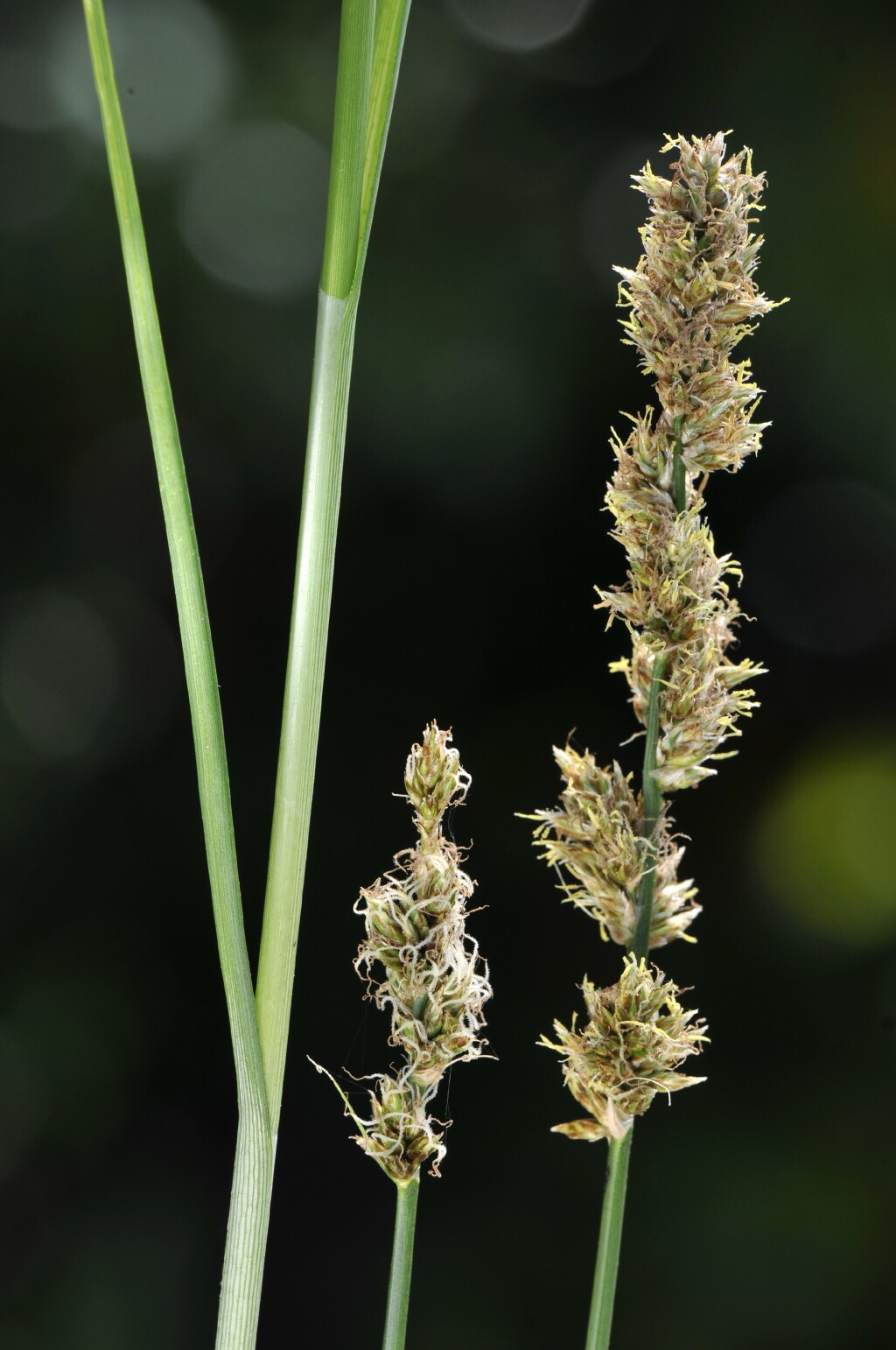Carex tereticaulis
F.Muell. Poong'ortRhizome thick, long; shoots ± densely tufted. Culms erect, terete to subtrigonous, glabrous, 40–120 cm long, 2–4 mm diam.; pith hollow throughout. Leaves usually reduced, usually much shorter than culms; blades to 60 cm long, but usually less than 20 cm long, 3–5 mm wide; sheath very dark yellow-brown; ligule acute to obtuse. Inflorescence narrow, erect, 1.5–6(–10) cm long, compound with numerous short spikes clustered at nodes or on spike-like secondary branches to c. 1.5 cm long; lowest involucral bract usually very short or occasionally as long as or longer than inflorescence. Spikes sessile, contiguous, erect at maturity, c. 0.5 cm long; all spikes with male flowers above female flowers; glumes obtuse to acute, orange-brown with white or hyaline margins; female glumes 2.5–2.8 mm long; utricles 2.2–4 mm long, 1.3–2.3 mm diam., ellipsoid, rather thickened at base, strongly several-nerved, hispid on upper, winged to ribbed, margins, pale brown tinged orange-brown to dark yellow-brown; beak c. 0.7 mm long, apex bifid; style 2-fid. Nut broad-ellipsoid to obovoid, lenticular, dark brown. Flowers spring.
LoM, MuM, Wim, GleP, VVP, VRiv, MuF, GipP, OtP, WaP, Gold, CVU, GGr, DunT, NIS, HSF, HNF, VAlp. Also WA, SA, NSW, Tas. Recorded as a casual wool alien in United Kingdom. Locally common, chiefly in the north and west in low-lying, seasonally inundated habitats, usually on heavy alluvium or clay soils. Scattered and rather uncommon in the south-east of the State.
Differs from Carex appressa in its terete, smooth, grey-green rather than yellow-green culms, the usually reduced leaves, and in the utricle, which is thickened at the base but not truncate.
Wilson, K.L. (1994). Cyperaceae. In: Walsh, N.G.; Entwisle, T.J., Flora of Victoria Vol. 2, Ferns and Allied Plants, Conifers and Monocotyledons, pp. 238–356. Inkata Press, Melbourne.
 Spinning
Spinning


